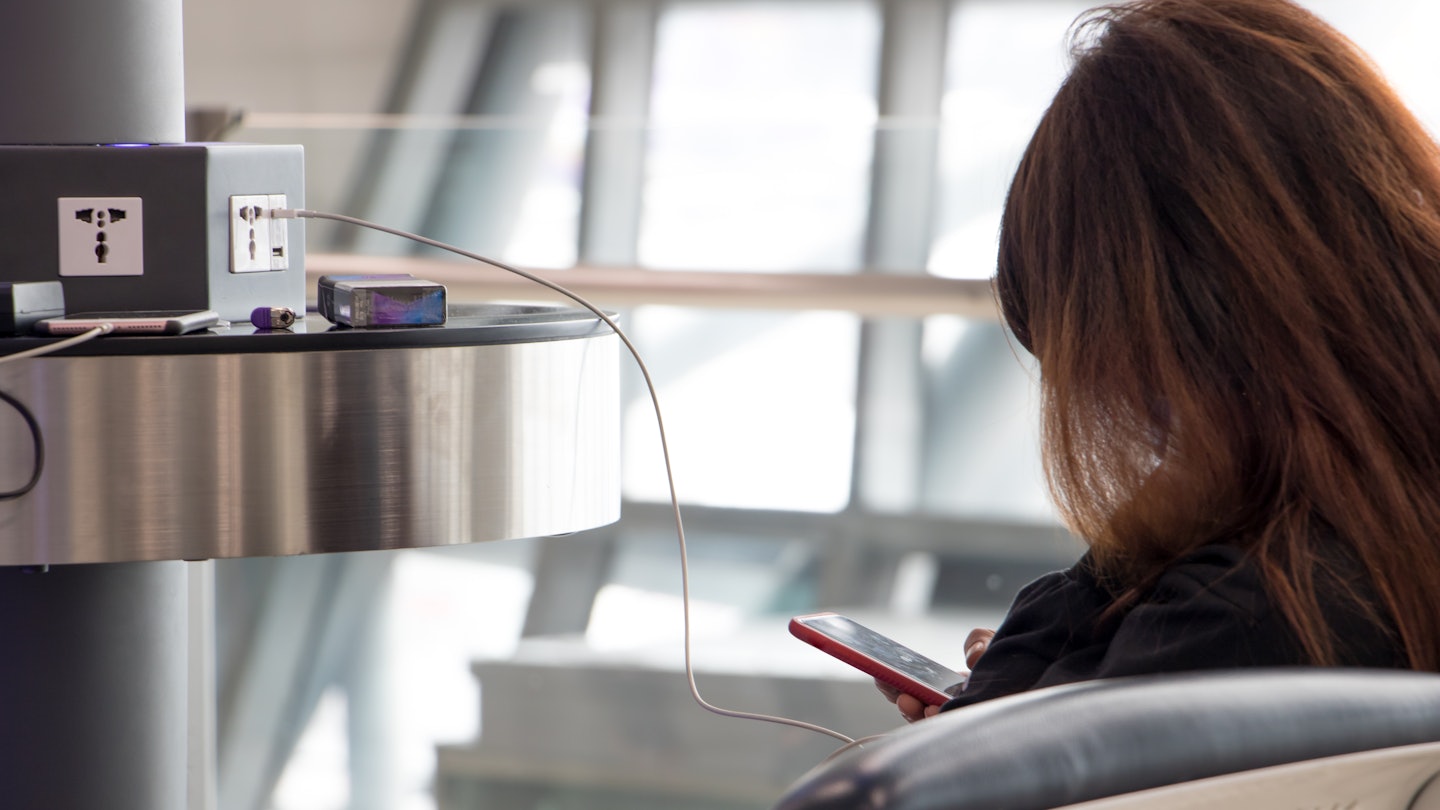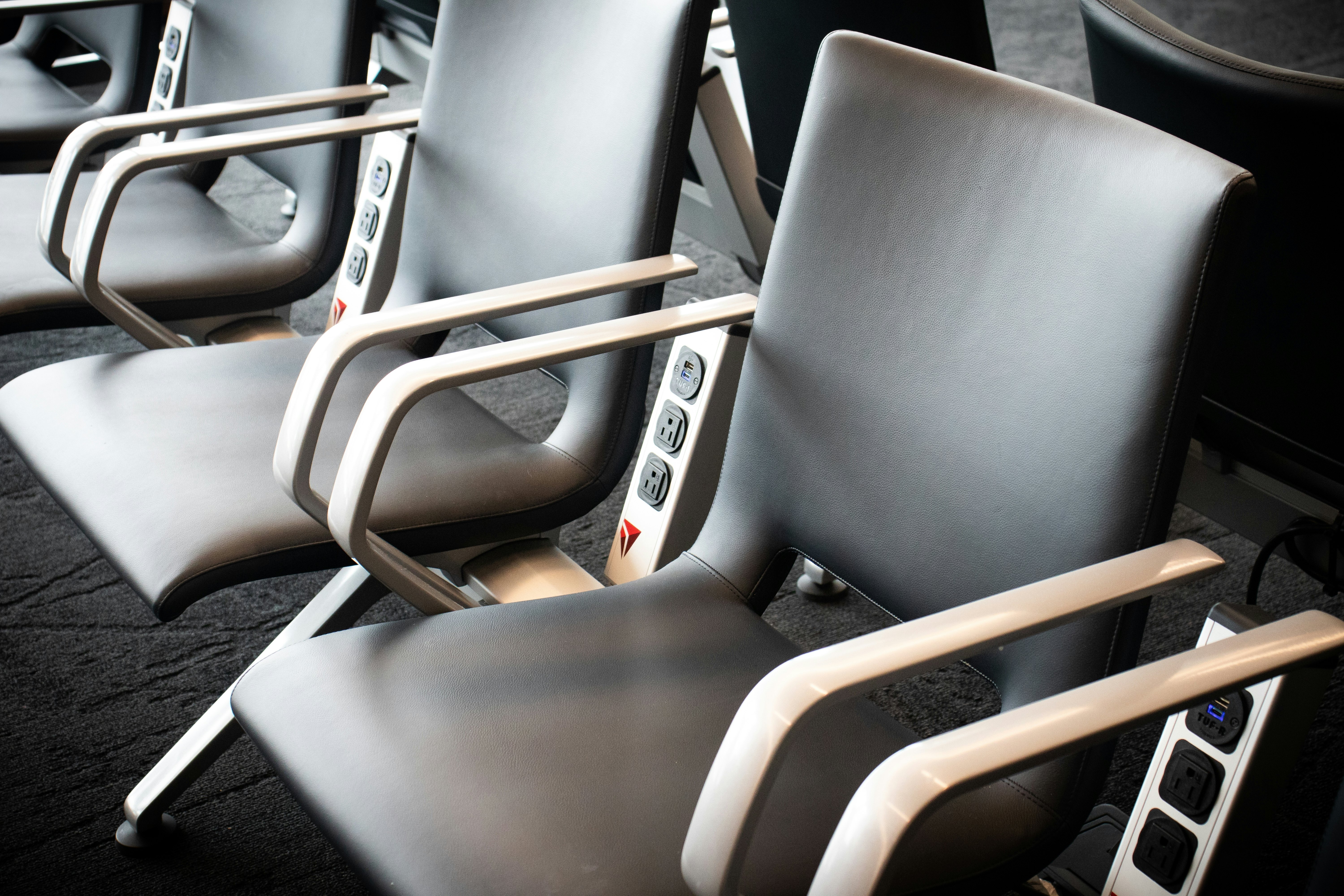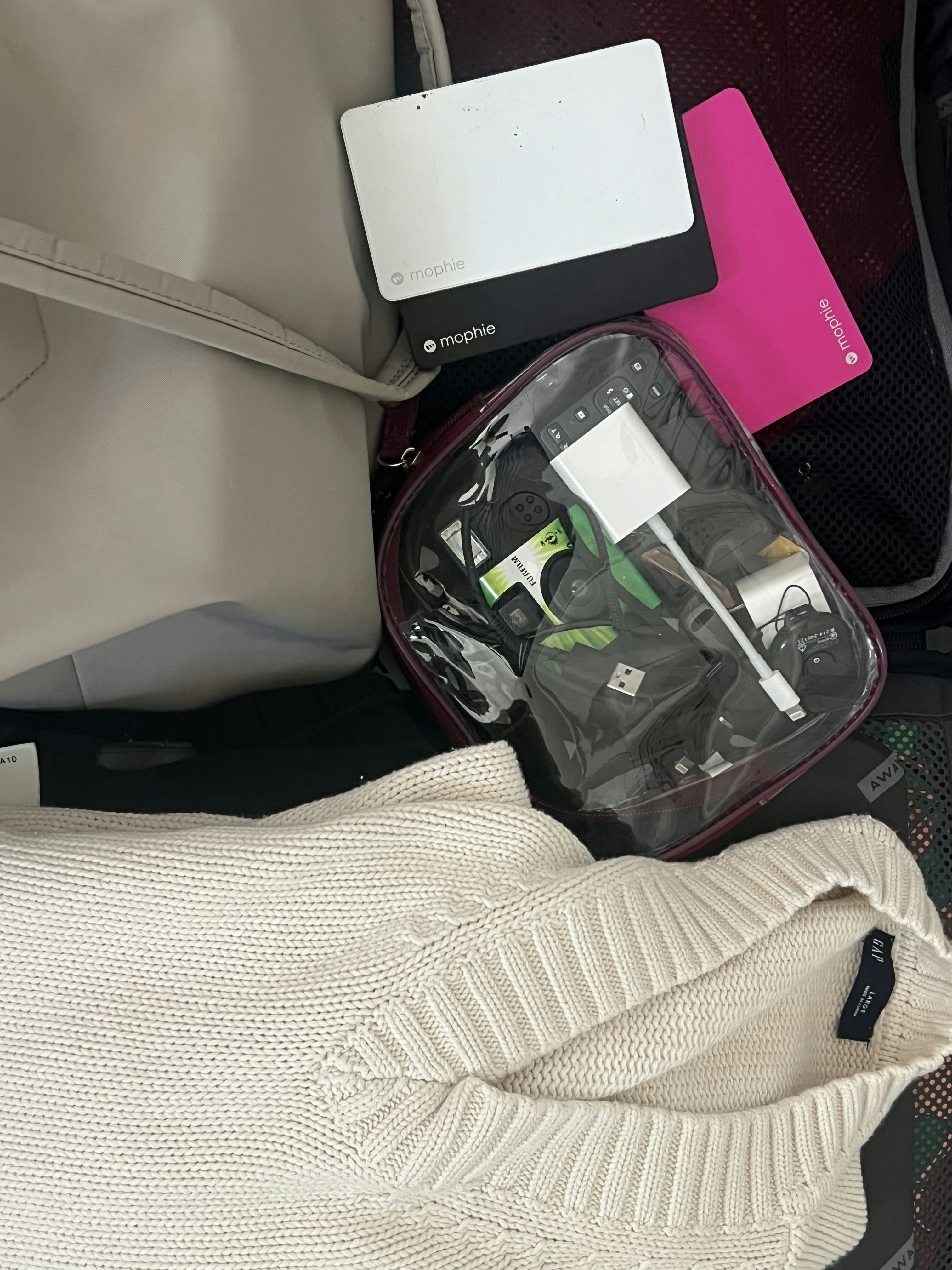
How to avoid getting hacked on your electronic devices at the airport

Jun 25, 2025 • 3 min read

Airport charging stations are not as trustworthy as you may think. Milkovasa/Shutterstock
Many travelers are in search of two things upon reaching their airport gate: 1. A coveted waiting area seat, and 2. A place to plug in their phone for a last-minute charge. You should reconsider the second.
Hackers may have tampered with the USB ports at those free charging stations, looking to steal your information. In the United States, the TSA and the FBI have previously issued warnings about this hackery, otherwise known as “juice jacking.” But that's not the only threat to your device; Wi-Fi hacking is another possible attack to be wary of when using your devices in airports and public spaces.
Here’s how both tactics work and how you can protect your devices.
How juice jacking works
Juice jacking is a cyber theft tactic in which hackers install malware into public USB ports. This allows them to lock your device and access sensitive information, like your personal data and passwords. Juice jacking is possible not only at designated public charging stations but also through the USB ports on waiting area seats. This tactic is also not limited to airports – any public charging station, whether at a shopping mall, sports arena, hotel or any other public space, is vulnerable.
While extremely rare, juice jacking should be taken seriously.

How to avoid juice jacking
The easiest way to avoid a juice jacking incident is to not plug your phone into a public charging port. According to the TSA, however, you may recharge a portable charger or charging pad using one of these ports without fear of being hacked. Always ensure your charger is TSA compliant.
Another solution is to use a charging-only cable that limits the sending and receiving of data when your phone is plugged in. It’s also considered lower risk if you use a charging block with your cord rather than plugging it directly into the USB port. Finally, if you accidentally plug your phone into a public USB port, you may receive a pop-up on your phone asking you to share your data or trust the device you’re plugged into. Always select the “charge only” option, though it’s always best to unplug your phone and use a portable charger.
Wi-Fi hacking
Wi-Fi hacking is another cybersecurity issue to be aware of in public spaces like the airport. If you need to send a quick text or check your email, it’s always best to use your cellular data, personal VPN or personal hotspot if you have one. Joining a public Wi-Fi network (yes, even the airport’s public network) leaves your connection at risk of being accessed by hackers, compromising your sensitive data. For example, if you make any online purchases using an untrustworthy public network, hackers would gain access to your credit card information.

Portable chargers we love
Apple MagSafe Charger: iPhone users and certain Android users will love this wireless charging pad that magnetizes to your phone. Recommended by Matt Paco, Senior Producer
Anker 621 Magnetic Battery: Another magnetic option that’s compact, lightweight and holds enough battery for one to two full phone recharges. Recommended by Serina Patel, Senior Marketing Manager
Mophie Powerstation Plus 10K Power Bank: If you prefer a power bank with a cord, Mophie power banks last ages and are very lightweight. This one is slim and easy to slip into your bag. Recommended by Rachel Lewis, Senior Social Media Manager
Belkin BoostCharge 3-Port Compact Power Bank: If you need something that’s more heavy-duty for charging multiple devices (or for content creation, if you’re our head of social media), this is our TSA-compliant pick. Recommended by Deepa Lakshmin, Social Media Director













